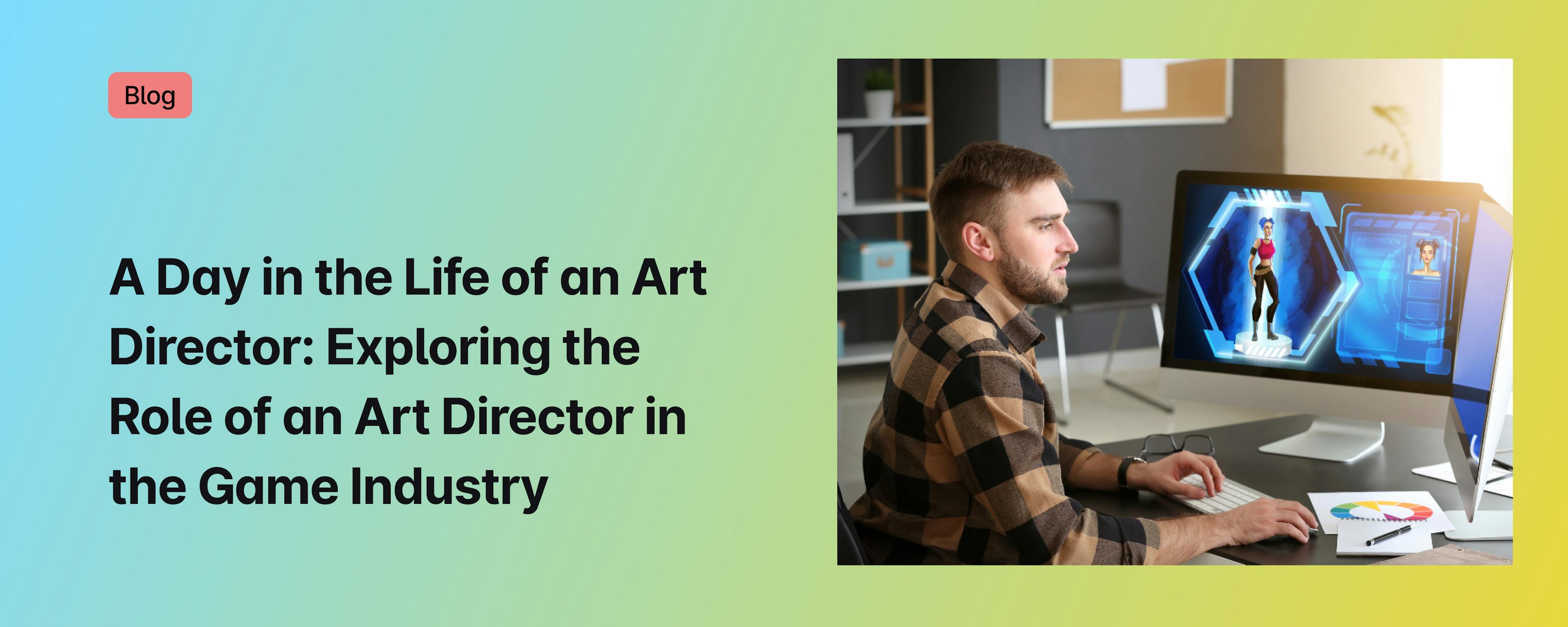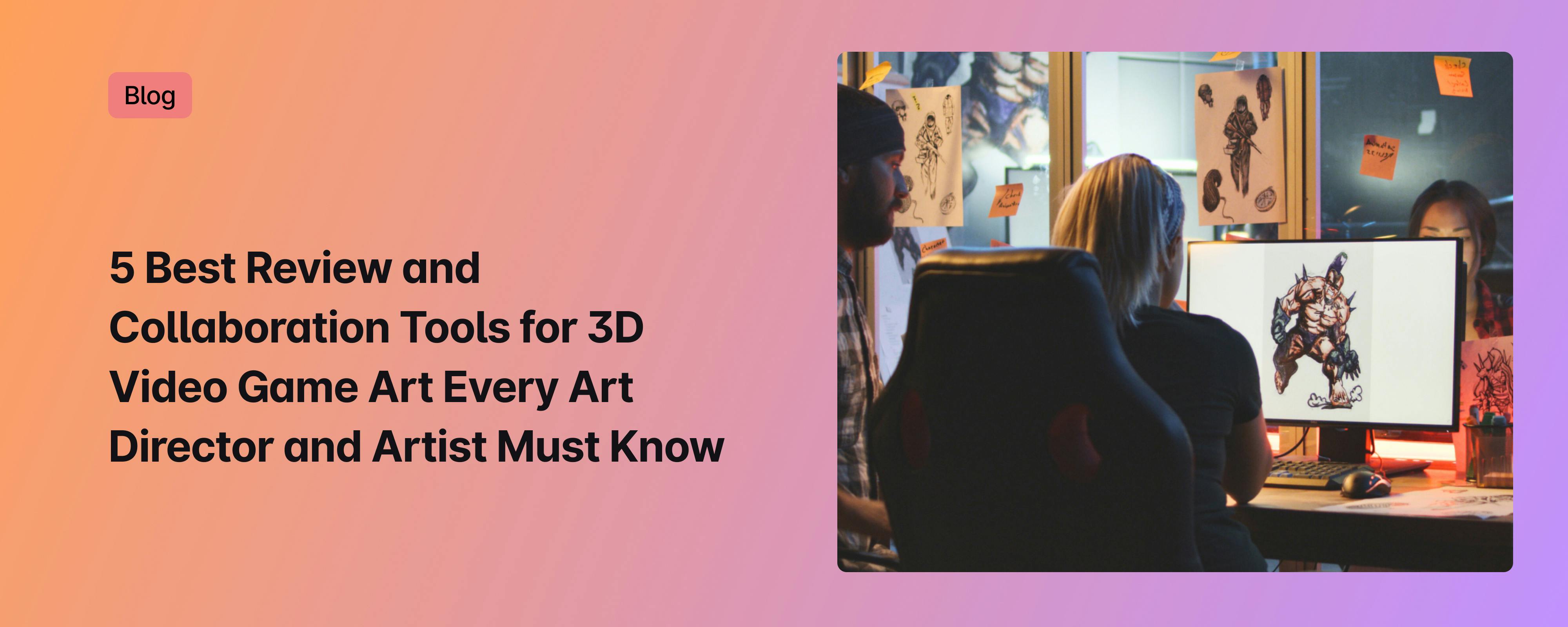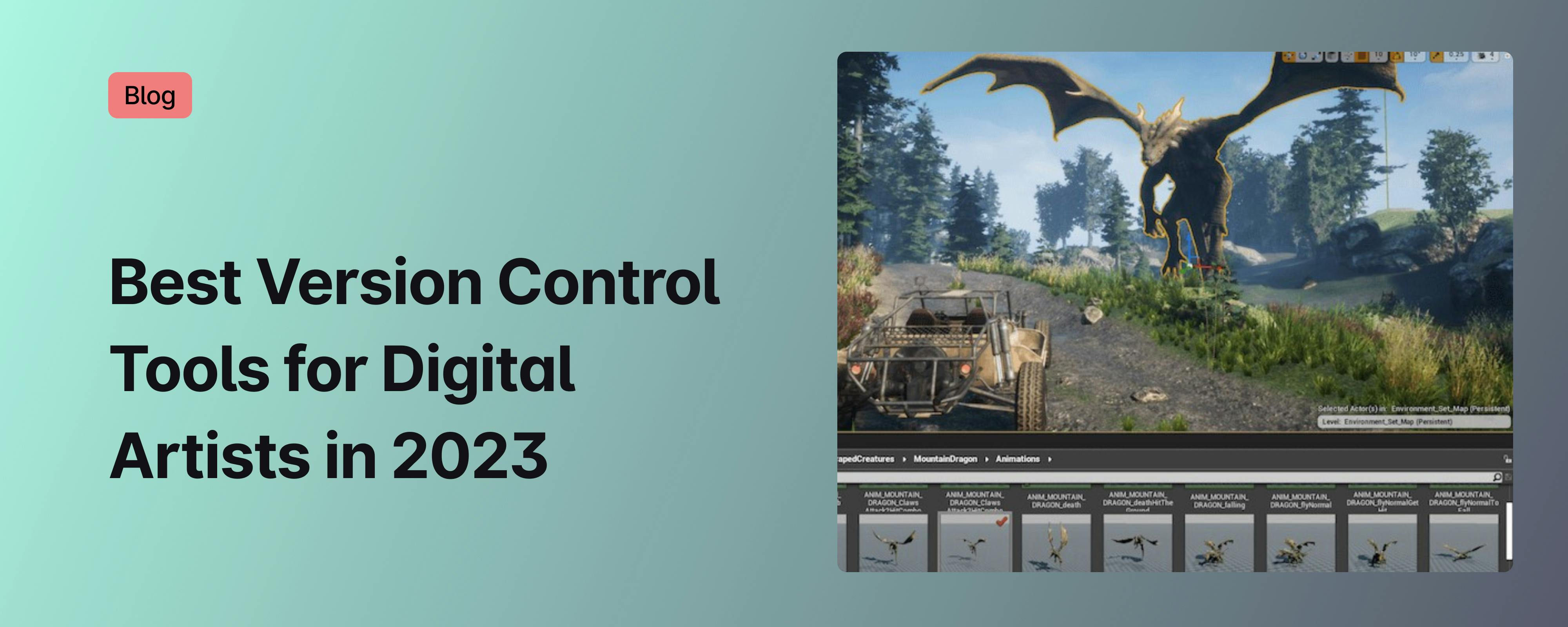A Day in the Life of an Art Director
Exploring the Role of an Art Director in the Game Industry


The role of an art director in the game industry is often not as clearly defined or obvious compared to other artist roles. In this blog post, we will shed some light on what an art director does in the game industry, specifically focusing on a day in the life of an art director. We will delve into the responsibilities, challenges, and creative aspects of this role and explore why it might or might not appeal to certain artists.
Understanding the Art Director's Responsibilities
Defining the Creative Vision
- Developing a clear and compelling artistic direction for the project.
- Collaborating with the creative team to establish a cohesive visual style.
Art directors are responsible for developing a clear and compelling artistic direction for the game. They understand the game's genre, gameplay mechanics, and target audience to create a visual style that enhances the player's experience. Collaborating closely with the creative team, including concept artists, level designers, and animators, they establish a cohesive visual style that brings the game to life. Through extensive research and exploration of art styles, they combine their artistic expertise with an understanding of market trends to create a vision that resonates with players. By defining the creative vision, art directors provide a roadmap for the entire development team, ensuring that the visual elements align with the game's objectives and create an immersive and captivating experience for players.
Problem Solving and Decision Making
- Addressing creative challenges and finding effective solutions.
- Balancing artistic integrity with client requirements and project constraints.
Art directors are adept at addressing creative challenges that arise during the development process. They possess a keen intuition for problem-solving, enabling them to overcome obstacles that may hinder the artistic vision or the project's progress. Whether it's tackling technical limitations, budget constraints, or design conflicts, art directors navigate these challenges by collaborating with the team and exploring alternative approaches. They strike a delicate balance between maintaining artistic integrity and fulfilling client requirements.
Art directors engage in thoughtful decision-making processes and balance the project's scope, timeline, and their audience. They make informed choices that optimize the visual experience while aligning with the studio’s expectations and project constraints.
Communication and Team Management
- Acting as a bridge between the creative team and clients.
- Ensuring effective communication within the team and across departments.
- Encouraging a supportive and empowering environment for artists.
Art directors play a crucial role as the bridge between the creative team and clients. They serve as effective communicators, translating the vision and requirements of clients into actionable tasks for their team of artists. Art directors strive to keep everybody on the same page. They facilitate open and clear communication channels, hold regular meetings, and provide timely feedback to foster collaboration and maintain project progress.
Art directors also facilitate communication within the team and across departments. They ensure that artists have a clear understanding of their roles, responsibilities, and deadlines. Regular check-ins and feedback sessions allow for constructive discussions, ensuring that everyone's contributions align with the project's vision. Art directors actively collaborate with other departments such as game design and programming to ensure that the artistic elements seamlessly integrate into the overall game experience.
They foster a positive work atmosphere where creativity flourishes, encouraging artists to express their ideas and push boundaries. By providing guidance, mentorship, and constructive feedback, art directors empower artists to push the creative boundaries of their craft. They recognize and appreciate the unique talents of each team member, nurturing their professional growth and fostering a sense of community within the team.
Building an Efficient Art Production Pipeline: Tools, Resources, and Digital Asset Management
- Establish a smooth art production pipeline
- Streamline the process with powerful tools like Photoshop, Maya, Unity, or Unreal Engine to empower artists and create stunning visuals.
- Implement effective digital asset management to ensure efficient collaboration, easy access to assets, and seamless workflow for timely project delivery.
As an art director, establishing a smooth art production pipeline can make or break your project. It involves defining clear stages, assigning tasks, and fostering collaboration among artists and team members. To streamline the process, you'll utilize tools like Photoshop, Maya, Unity, or Unreal Engine, which empower artists to create stunning visuals. Specialized plugins and add-ons further enhance productivity and efficiency.
Digital asset management is crucial for organizing and maintaining the vast array of digital assets created during game development. With texture files, models, and animations, efficient management, and version control become essential. By utilizing asset management software and implementing robust organizational systems, you'll enable seamless collaboration and easy access to digital assets, ensuring smooth workflow and timely delivery.
The size and scale of your projects will play a huge role in deciding which digital asset management platform you choose. It’s also important to keep the sanity of your team in mind, as many commercial options were not built with artists in mind.
For an artist-friendly, affordable option that scales with your team and doesn’t punish growth, you might want to consider a platform like mudstack. Mudstack is the only digital asset management platform custom-built for game studios and digital art teams. Built on the three pillars of file-level version control, organized collaboration, and effortless review, mudstack is a great choice for any studio that puts its artists first. Mudstack is free for artists and offers an affordable solution for art directors who are looking to build a more efficient art production pipeline.
A Day in the Life of an Art Director
Addressing Challenges and Putting Out Fires
- Dealing with unexpected issues that arise during the production process.
- Finding efficient and effective solutions to maintain project progress.
Art directors are adept at handling unexpected issues that inevitably arise during the production process. They are the go-to problem solvers who remain calm and composed in the face of challenges. When unexpected hurdles emerge — technical glitches, resource constraints, or design conflicts — art directors step in to identify the root causes and devise efficient solutions. They draw upon their extensive knowledge and experience to navigate these challenges, ensuring that project progress remains on track. By collaborating with the team and leveraging their creative problem-solving skills, art directors find effective resolutions that keep the project moving forward smoothly. Their ability to address challenges and put out fires in a timely manner contributes to the successful execution of the game and the overall satisfaction of the development team.
Creative Empowerment and Artistic Exploration
- Art directors can engage in paint overs, lighting adjustments, and experimentation in tools like Blender when not overwhelmed with projects.
- Focusing on being a creative artist and providing support to the team.
When art directors have fewer projects on their plate, they have the opportunity to engage in various creative activities that further enhance their artistic skills. This could include tasks like paint overs, where they refine and enhance existing artwork through digital painting techniques. They also delve into lighting adjustments, experimenting with different lighting setups to create the desired mood and atmosphere in-game environments.
During these periods, art directors prioritize their role as creative artists while also providing support to the team. They immerse themselves in the artistic process, allowing their creativity to flow and flourish. By engaging in hands-on artistic tasks, art directors can deepen their understanding of the challenges faced by the artists they oversee. This experience enables them to offer valuable guidance and support, drawing on their own artistic exploration to inspire and mentor the team. By focusing on their own creative development and providing support to the artists, art directors contribute to a vibrant and thriving creative culture within the studio.
Deconstructing the Appeal of the Art Director Role
Being an art director isn’t for everyone. The appeal ultimately depends on individual preferences, career goals, and artistic aspirations. It’s important to carefully consider your own motivations and have a good sense of your strength when exploring your career as an artist.
Leadership and Managerial Responsibilities
For artists who enjoy leadership and managerial responsibilities, the position of an art director can be appealing. They have the opportunity to guide and mentor a team of talented artists, fostering a collaborative and supportive environment. Art directors can provide valuable guidance and feedback to help artists grow and excel in their craft. This aspect of the role allows artists to make a broader impact on the creative process and contribute to the overall success of a project.
Influence on Creative Direction and Client Collaboration
Artists who are passionate about shaping the visual direction of a game and working closely with clients may find fulfillment in taking on a director’s role. They have the chance to define the creative vision and collaborate with clients to ensure that the artistic aspects align with the project's goals and requirements. This involvement in the decision-making process and the opportunity to see their artistic vision come to life can be highly rewarding for artists seeking a sense of ownership and creative control.
Artistic Specialization and Focus
On the other hand, some artists may prefer to focus solely on their individual artistic pursuits without the added responsibilities of management and decision-making. They may thrive in a more specialized role where they can dedicate their time and energy solely to creating artwork, without the need to oversee a team or deal with client interactions. Such artists may find fulfillment in positions like concept artists, character designers, or environment artists, where they can immerse themselves deeply in their craft and explore their artistic style without the added pressures of leadership.
Freedom for Exploration and Risk-Taking
Some artists may prefer a more flexible and exploratory approach to their work, where they have the freedom to experiment, take risks, and constantly push the boundaries of their creativity. While art directors do engage in artistic exploration, they also bear the responsibility of meeting project requirements, balancing client expectations, and adhering to production constraints. Artists who thrive on unstructured, open-ended artistic exploration may prefer roles that allow them more freedom to experiment and take creative risks.
Mudstack is the only asset management and collaboration platform custom-built for game studios and digital artists.
Mudstack is dedicated to improving asset management and collaboration together. You can join our Discord channel to speak directly with our product team or schedule a demo to show us your art production pipeline and see our software in action.



